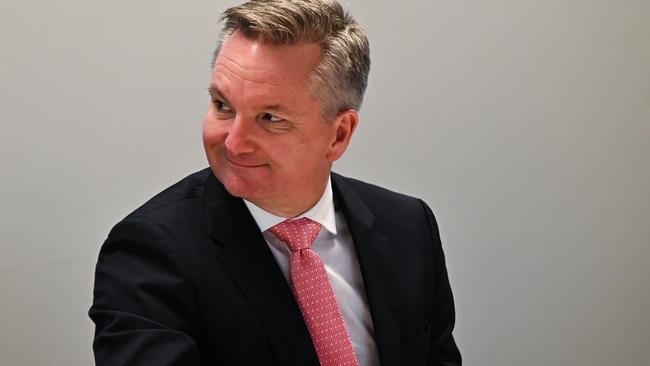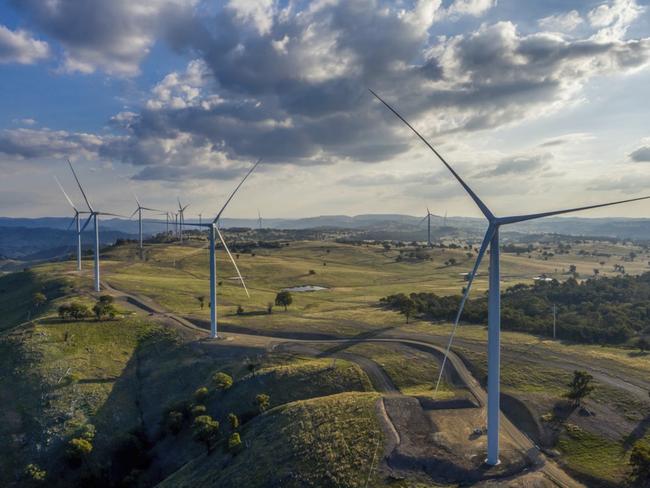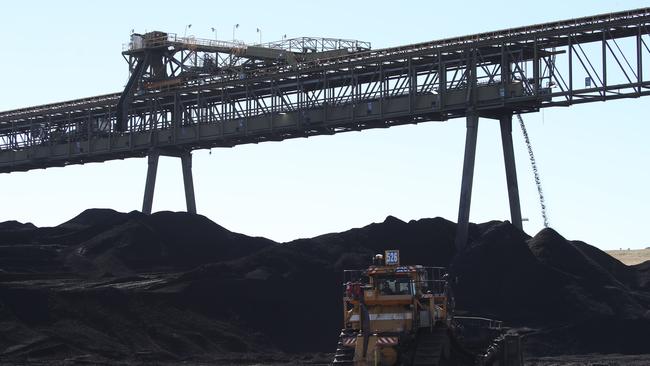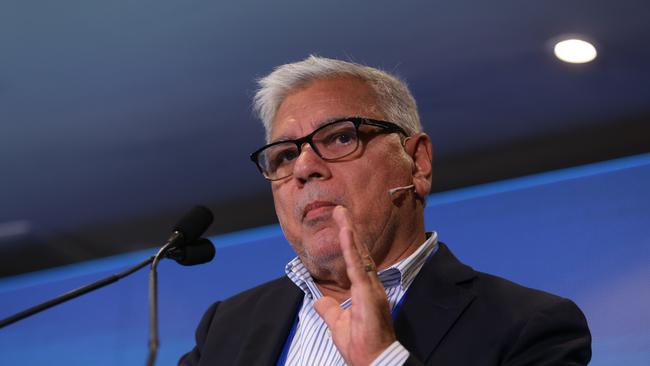Peta Credlin: Insane energy policy makes power more expensive and less reliable
The electricity crisis will get worse before it gets better as only blackouts, industry closures, job losses and massive price hikes will change the minds of the climate dreamers, writes Peta Credlin.
Opinion
Don't miss out on the headlines from Opinion. Followed categories will be added to My News.
A classic definition of insanity is doing the same thing over and over again and expecting a different result. By this standard, Australia’s energy policy is literally insane. More and more renewable energy over the past decade has made our power supply more expensive and less reliable.
Right now, wholesale electricity prices are soaring and power rationing is being forced on big users in order to avoid blackouts, yet the federal energy minister says the answer is even more intermittent renewable power.
Earth to Chris Bowen: renewable power only works when the wind blows and the sun shines, yet we need electricity 24/7. And while you can run a house on solar panels with batteries, you can’t run an economy on them – certainly not one that still has energy-intensive manufacturing industries that demand power that’s both affordable and reliable.
Ever since the election of Kevin Rudd, Australia’s power system has been run to reduce emissions rather than produce cheap, 24/7 electricity.

Wind and solar have gone from virtually nothing to over 20 per cent of our total electricity supply – not because it’s cheap overall, but because billions have been pumped in so that we can progressively shut down what works for what doesn’t, and then strut the world stage pretending we’re climate paragons.
At the same time, we’ve made it almost impossible to keep ageing coal-fired power stations in operation because banks won’t lend the finance to keep them going or build new ones, and we haven’t got enough available gas to make up the shortfall.
This is an energy crisis that we have made for ourselves by putting wishful green thinking before the engineering reality of power generation. It’s more than 15 years since the last coal-fired power station was built in Australia. As the experience of Adani demonstrates, it’s almost impossible to open new coal mines thanks to governmental procrastination and activist lawfare.
Developing new gas deposits is almost as hard and is actually illegal in Victoria.
If we keep demonising fossil fuels, and insist on a fully renewable power supply, we’ll get to net zero all right – but in the process we’ll lose all our heavy industry (along with the jobs and tax revenues) and reduce Australians to abject energy poverty.
If coal-fired power really is as expensive as the climate zealots claim, why does China keep building it, and why are our thermal coal exports at record levels?

If wind and solar (backed up by batteries or pumped hydro) really was the cheapest available energy, that’s what the Chinese would be investing in. Instead, the Chinese are building so many new coal plants that the annual increase in China’s emissions exceeds our total emissions.
On average, wind and solar only work for eight out of 24 hours yet we need electricity to be available every time someone hits the switch. But because wind and solar are indeed cheap when the wind’s blowing or the sun’s shining, they’ve jeopardised the profitability of coal-fired power which can’t readily be ramped up or down every time the clouds change or the wind varies.
That doesn’t really bother the power companies because the premature closing of coal plants raises the average price of power, boosts their profits, and raises the value of their remaining generators.
It’s no concern of theirs Australia’s power prices have gone from among the world’s lowest to the highest because all of us – their customers – really have no choice but to keep paying, so their profits surge (and the executive bonuses too).
That’s why there’s a conga line of business leaders backing wind and solar – they’re minting money through renewable subsidies plus a captive market while also burnishing their green credentials amongst a public that mostly hasn’t thought this through. Those who have are horrified at how we got into this mess and know it’s only going to get worse.

After Rudd started down this path, the only recent prime minister not to maintain the pretence that we could simultaneously cut emissions, lower prices, and maintain affordability was Tony Abbott – and he was cut down, in part, because he was supposedly a climate denier.
He wasn’t; he supported sensible moves to reduce emissions but questioned the common sense in putting emissions reduction ahead of maintaining jobs and protecting living standards. By contrast, Malcolm Turnbull wanted the Coalition to join the Labor premiers in supporting the so-called National Energy Guarantee that put emissions reductions ahead of affordability and reliability; and Scott Morrison signed up to “net zero” without a costed plan to get there.
Now, not only has Anthony Albanese committed to raising renewables to almost 90 per cent of total power generation by 2030, he’s promised to cut household power bills by $275 a year by 2025.
As well, he reckons a government contribution of $20bn, as part of a total $60bn investment, in a new decentralised power grid will cut prices even further – as if spending on such a gargantuan scale would not have to be recouped from consumers.
In other words, we’re being peddled an economic fairytale on top of the engineering one.
Even more concerning is Albanese’s announcement late last week that Labor will lock the new emissions reductions targets into legislation. By almost doubling the existing target to 43 per cent by 2030 (only eight years away now), and legislating it, Albanese is trying to wedge the Greens, who have been his political nemesis for decades (and where Labor feel politically vulnerable out of the recent election).
When our energy crisis inevitably worsens, the hands of future governments will be tied against winding back this madness, given the sheer improbability of winning enough Senate support to undo this mess. It’s hard not to despair of a country that has massive reserves of coal, gas and uranium that it’s ready to export but not use. We a country with a super-abundance of energy with some of the world’s highest energy prices; an abundance of land yet some of the world’s highest housing prices; and plenty of water but we refuse to manage it enough for farmers to make the most of it.
As Margaret Thatcher once observed, the facts are conservative. Eventually, reality will mug the climate dreamers. Unfortunately, things will get worse before they get better as only blackouts, industry closures, job losses and massive price hikes will change their minds. Sadly, it will be those who can least afford it who will get hit first, and hardest.
LESS FOOD FOR THOSE WHO NEED IT MOST
It looks pretty certain that the new government is going to abolish the cashless debit card, which has been used in a long-term trial to ensure taxpayer welfare gets spent on the necessities of life and not blown on booze, drugs, cigarettes or gambling.
Currently, about 17,000 people are subject to the card – and about 60 per cent of those subject to it are not actually Indigenous.
But that hasn’t stopped the usual activists branding it unfair, inconvenient and (of course) racist.
That’s even though most community leaders in the impacted places say the card has led to less substance abuse, fewer violent incidents, and better school attendance.

Why would Labor be against the card, which only came into existence, back in 2016, with Labor support in the Senate? The card isn’t perfect – no system is. Some people could still barter their goods for cash.
But as Indigenous leader Warren Mundine pointed out this week, in the absence of any better plan the government’s move makes almost inevitable an outbreak of destructive spending in the affected communities. And less food on the table for the little ones that need it.
WATCH PETA ON CREDLIN ON SKY NEWS, WEEKNIGHTS AT 6PM




